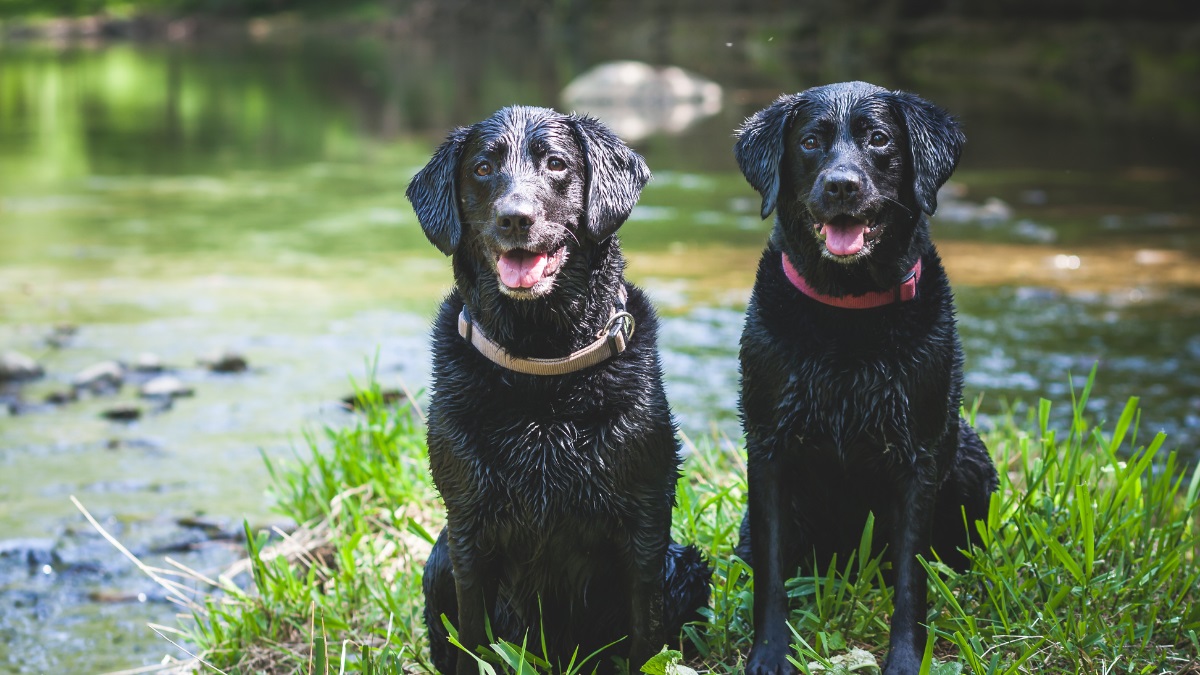Do you need help?

Summer is a fantastic time to enjoy the outdoors with your furry friends; long walks, trips to the park, and lazy days in the sunshine. But with the rise in temperature and outdoor activity, summer also brings a spike in emergencies. At Vets Now, we see an increase in cases involving heat stroke, allergic reactions, adder bites, and more during the warmer months.
To help keep your dog safe and healthy this summer, here’s a rundown of some of the biggest hazards to watch out for.

Water hazards
Water activities are fun, but they come with risks. Not all dogs are strong swimmers, and even confident ones can panic if trapped in deep water, leading to drowning. Always supervise your dog near pools, lakes, or the sea, and consider a doggy life jacket when boating.
Blue-green algae which thrives in warm stagnant water, produces toxins that can cause liver failure and neurological problems if ingested – even a small amount can be fatal. Keep your dog away from discoloured or scummy water surfaces.
Saltwater can also be dangerous if your dog drinks too much while swimming. Excess salt intake can lead to vomiting, seizures, kidney damage, or death. Limit swimming time and provide plenty of fresh water to help them stay hydrated.
Toxic wildlife
In summer, dogs often encounter toads or get stung by bees and wasps. Toads secrete a toxin that can cause drooling, vomiting, tremors, breathing difficulties, and even collapse in severe cases. If your dog licks or bites a toad, rinse their mouth carefully with water but don’t let them swallow it, and seek veterinary help immediately.
Bee and wasp stings are also common in dogs, particularly in Summer. Curious dogs often get stung while exploring, stepping on a bee, or snapping at a wasp.
In some cases, stings are just mildly irritating and cause swelling, drooling, distress and excessive licking at the site – but they can also trigger severe allergic reactions, including anaphylactic shock, which can be life-threatening. Multiple stings further increase the risk of serious complications.
Timing is crucial as most allergic reactions occur within 10 minutes, but they can also be delayed for hours. In some cases, delayed anaphylaxis in dogs can occur much later, making it essential to stay vigilant.
Garden and outdoor chemicals
Many pest control and gardening products contain chemicals harmful to dogs. Metaldehyde slug pellets are particularly toxic and can cause tremors, seizures, and muscle rigidity. Ant baits and powders may also cause neurological issues, whilst rodenticides designed for rats and mice can cause severe internal bleeding if ingested.
Compost heaps can harbour toxic moulds, and cocoa mulch contains theobromine, the same poison found in chocolate. These substances can cause vomiting, diarrhoea, neurological signs, or even death. Always use pet-safe alternatives, store chemicals securely, and keep dogs away from treated areas.
Toxic foods and substances
Various foods and substances that are more prevalent throughout the summer months can be hazardous for dogs. Remember to watch out for the following:
- Xylitol – a common artificial sweetener found in sugar-free gum, candies, and some baked goods – can cause dangerously low blood sugar and liver failure in dogs. Keep products containing xylitol well out of reach.
- Palm oil nuggets that wash up on beaches can cause vomiting, diarrhoea, and pancreatitis if eaten. Be vigilant during beach outings to stop your dog from eating unknown substances.
- BBQ leftovers such as cooked bones, fatty meats, corn cobs, and kebabs pose choking hazards and digestive issues. Keep BBQ food out of reach and never leave your dog unattended near grills.
- Discarded fish hooks and bait can cause painful injuries in your dog’s mouth or paws. Be cautious in fishing areas and properly dispose of all tackle.

Plants and flowers
Many popular summer plants are toxic to dogs if ingested. These include foxglove, oleander, poppies, chrysanthemums, yew, and more. Signs can range from mild vomiting and diarrhea to severe heart or neurological problems. If your dog shows signs of weakness, drooling, vomiting, or seizures after exposure to plants, seek veterinary care immediately.
If you’re unsure about your garden plants, keep dogs supervised outdoors or consider pet-safe landscaping.
Parasites and pests
Ticks become more active during warm months and can latch onto your dog, spreading diseases such as Lyme disease, ehrlichiosis, and babesiosis. These illnesses can cause fever, lethargy, joint pain, and more.
Check your dog daily for ticks, especially after walks in woodland or grassy areas, and remove any you find promptly with a tick remover.
Environmental risks: sand and physical injuries
Dogs love to dig and play at the beach, but swallowing sand accidentally can cause a dangerous blockage called sand impaction. This can lead to vomiting, constipation, abdominal pain, and requires veterinary intervention.
Sharp shells, broken glass, or hot sand can injure paws. Inspect play areas carefully and rinse paws after beach visits to remove irritants.
If your dog shows any signs of illness or injury after exposure to our list of summer hazards, don’t wait. Contact your vet or your nearest Vets Now emergency clinic for expert advice and urgent care. Early intervention is key to a full recovery.

